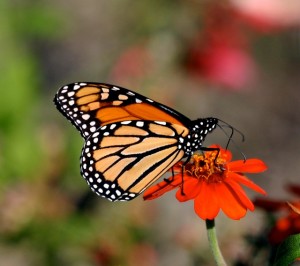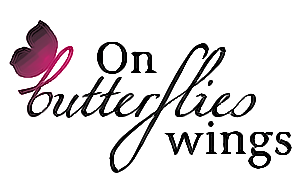BY RAMIT PLUSHNICK-MASTI
ASSOCIATED PRESS
HOUSTON (AP) — A half-century ago, Monarch butterflies – tired, hungry and bursting to lay eggs – found plenty of nourishment as they migrated from Mexico through Texas. Native white-flowering balls of antelope milkweed covered grassland areas, growing alongside other nectar-filled flowers.

But now, these orange-and-black winged butterflies find mostly buildings, manicured lawns and toxic, pesticide-filled plants after crossing the Rio Grande. Already hampered by disappearing habitat in Mexico, years of drought and almost no sustenance farther north in the Great Plains, the Monarch is getting help as a Texas state agency is preserving ecosystems and nonprofits are offering grants and rare plant seedlings to boost habitat.
“They are worn out. … They’re stumbling into Texas and they’re laying eggs with their last gasp,” said Charlotte Reemts, an ecologist with The Nature Conservancy, explaining that milkweed is crucial food in the caterpillar’s transformation into a butterfly. “The caterpillars would have nothing to eat so it’s really important to have milkweed in Texas.”
Leslie Provence of the Terrell Heights Community Garden in San Antonio helped get a $500 grant from the Native Plant Society of Texas to plant milkweed, Texana flowers and other fauna the Monarchs enjoy. Aided by children who helped remove Bermuda grasses and weeds from the small plot planted last spring, the group enjoyed the fruits of their labor in fall.
“They weren’t covered solid, but we would see three or four (Monarchs) at a time instead of one occasionally,” Provence said. “So our 120 square feet isn’t much, but it’s something that we can do.”
That is the idea. If homeowners devote small areas of their yards to native plant species, Reemts said, it will help Monarchs, as well as other insects and pollinators such as bees.
“If you look, particularly at the San Antonio to Dallas corridors, there is very little area that … is not developed,” Reemts said, noting Central Texas was once covered with prairies and grasslands, of which only about 1 percent remain. “So anything that’s migrating up this corridor the only habitat available to them is your backyard.”
Pretty lawns aren’t habitat.
“One garden won’t make a difference, but 100 gardens will,” Reemts added.
The Monarchs’ plight begins in Mexico, where they winter in fir trees in the Oyamel forest in the mountainous area of Michoacan state. Much of the forest has disappeared due to climate change and extensive logging. In the 1990s, an unusual freeze killed nearly half the butterflies clinging to the trees.
Recovering from that has been difficult because of what the Monarchs face in the north. The only species of butterfly known to carry out an annual two-way migration covering more than 3,000 miles, the Monarchs need energy. But habitat is scarce when they get to Texas in spring – and disappearing at a rate of 6,000 acres daily, experts say. Farther north in the Great Plains, milkweed is even scarcer as farmers plant fertilizer-resistant corn and clear greater tracts of land to plant the lucrative crop.
Wildflowers are also important, said Ben Hutchins, an invertebrate biologist with the Texas Parks and Wildlife Department, which does controlled burns and other work to preserve prairies and other native ecosystems. It is the great-great grandchildren of the butterflies that leave Mexico in winter that eventually return the following year, Hutchins explained, and every step of the journey is crucial to their survival.
“If we don’t have the wildflowers for the adults they won’t have the energy to continue migrating north … and we won’t have it for those coming back south,” Hutchins said. “We’re a big state. It’s a lot of miles and without the wildflowers they won’t have the energy to continue the migration.”
And so, Debbi Harris, who oversees the Milano Junction Memorial Garden in Milano – a town of about 430 people some 130 miles northwest of Houston – used her $200 grant to plant a Monarch way-station in a vacant lot. By selling wildflower seeds and spreading information about milkweed’s importance, Harris has two other areas interested in planting Monarch gardens.
“What I’ve done is just started a fire, a small one, but it’s gotten two other counties interested in starting their own project,” Harris said.
For Reference: http://hosted.ap.org/dynamic/stories/T/TX_TEXAS_MONARCH_BUTTERFLIES_TXOL-?SITE=AP&SECTION=HOME&TEMPLATE=DEFAULT





















